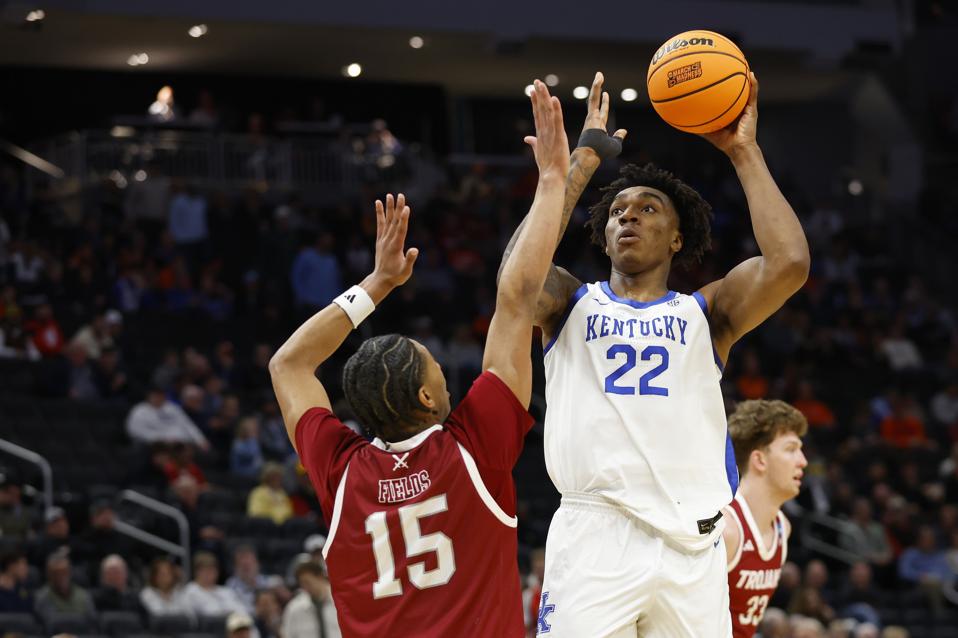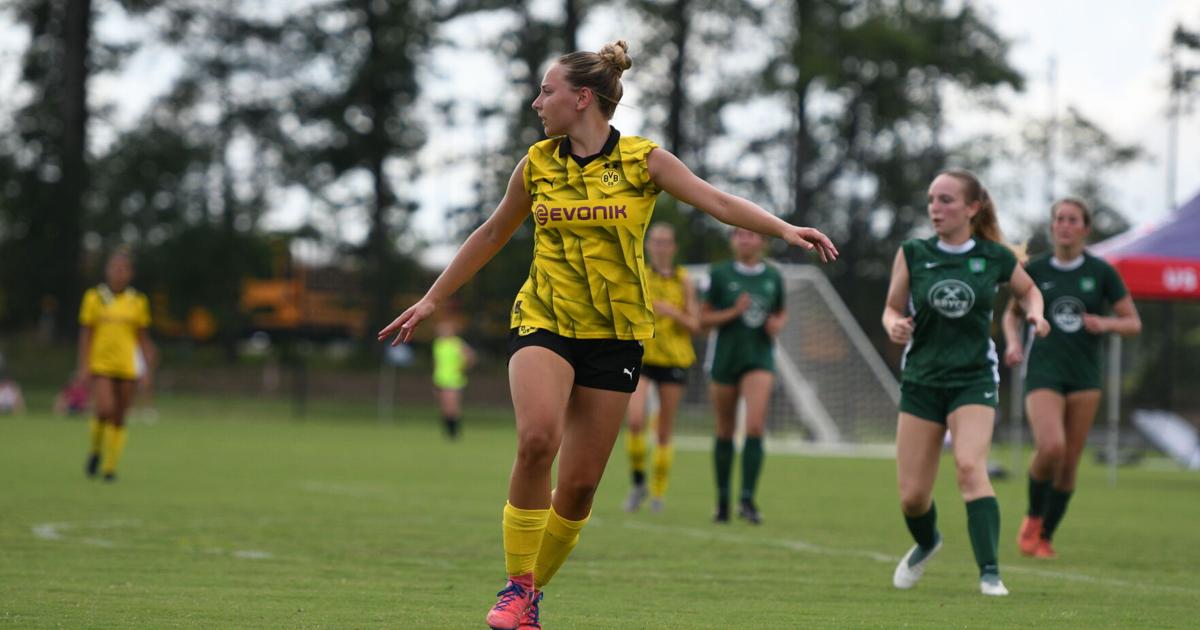
- The SEC and Big Ten are re-evaluating their roles within the NCAA, with some leaders considering possible departure due to legal and financial pressures.
- Major changes in college sports, including athlete compensation (NIL), antitrust lawsuits, and increased commercialization, are challenging traditional NCAA authority.
- Dissatisfaction with the NCAA’s regulatory effectiveness is prompting discussions about conference autonomy versus centralized oversight.
- Severing ties with the NCAA could endanger national championships, traditional rivalries, and the stability of Olympic and academic sports programs.
- The future of college athletics may be redefined, as major conferences debate whether to trust the NCAA’s leadership or pursue independent governance.
Whispers of upheaval echo through the hotel corridors where college sports’ most influential minds gather, their conversations charged with urgency as the status quo faces unprecedented scrutiny. The SEC—an emblem of athletic dominance and cultural significance—stands at the heart of a rumbling debate: does its future belong within the NCAA’s storied tradition, or is it time to chart a new course?
Rumination has turned to restlessness among SEC athletic directors, some now openly questioning the value of continued NCAA membership. These deliberations are not idle. For decades, the NCAA has been the governing body shaping the landscape, enforcing rules, hosting celebrated championships, and ensuring a degree of harmony amidst fierce competition. March Madness, with its shared brackets and riveting upsets, has long served as the glue binding schools and fans alike.
But the ground beneath collegiate athletics is shifting. Legal battles—most notably the House v. NCAA antitrust case—have battered traditional models of amateurism, opened doors to athlete compensation, and forced universities to consider the nature of their allegiance. For SEC power brokers, the question is no longer abstract. Legal and financial pressures gnaw at their patience, pressing conference leaders to contemplate drastic steps for institutional survival.
It’s not just the SEC. The Big Ten, another behemoth, is quietly entertaining similar ideas. Their shared autonomy has grown, but a sense of dissatisfaction lingers. Critics argue that NCAA enforcement and regulatory mechanisms have failed to keep pace with modern challenges, including name, image, and likeness (NIL) reforms, escalating litigation, and the rapid commercialization of college football and basketball.
Yet even as some contemplate departure, there’s an undercurrent of caution. The NCAA’s role in orchestration—especially in renowned national championships—remains a powerful cement. The prospect of severing ties raises the specter of fragmentation, the unraveling of traditions, and uncertainty for thousands of athletes.
Administration officials stress the need for continued oversight, recognizing that athletics in America thrives under some measure of regulation. The alternatives—complete deregulation or fragmented governance—could threaten not only revenue sports, but also Olympic disciplines and academically integrated programs.
As SEC meetings in Miramar Beach unspool, the agenda is packed: football playoff expansion, the prospect of a nine-game schedule, and looming questions about the future of national championships swirl amid the sea air. But the true undercurrent is existential. Should the most powerful conference in sports trust its future to the NCAA’s uncertain stewardship—or is it time to rewrite the rules themselves?
For millions who fill stadiums and pencil in tournament brackets, the answer may redefine the spectacle and spirit of college sports for a generation.
Key takeaway: The SEC, along with other top conferences, stands at a crossroads. The decisions made here won’t just shape football schedules or championship lineups—they could rewrite the entire rulebook for the future of American collegiate athletics.
SEC and NCAA on a Collision Course: What a Breakaway Could Mean for College Sports Fans, Athletes, and March Madness
SEC Power Play: Why the Future of College Sports Hangs in the Balance
The ongoing power struggle between the SEC and the NCAA is more than just sports politics—it’s about the future of college athletics as we know them. Beyond headline debates at leadership retreats, tectonic shifts are underway that could reshape traditions, financial models, and student-athlete experiences. Here’s what’s really at stake, what could happen next, and what every fan—and stakeholder—should know.
—
Untold Developments: What’s Really Fueling the SEC Uprising?
1. Growing Financial Disparity
The SEC and Big Ten conferences—already wealthy thanks to multi-billion dollar television deals (e.g., the SEC’s $3 billion ESPN/ABC contract)—are seeing ever-wider revenue gaps compared to smaller conferences. This disparity intensifies the temptation for top schools to “go it alone” and control their own media rights and playoff systems.
2. Athlete Empowerment and NIL
The arrival of Name, Image, and Likeness (NIL) earnings has changed the landscape. Athletes today can earn market-based endorsements, putting pressure on schools and conferences to create more flexible, athlete-friendly governance structures—something the NCAA has historically stymied or hesitated to accommodate.
3. Legal Precedents and Litigation
Cases like House v. NCAA, Alston v. NCAA, and O’Bannon v. NCAA have set legal standards that erode the NCAA’s ability to control amateurism. Courts have consistently ruled in favor of athletes’ rights, exposing the NCAA to billions in potential back pay, damages, and restructuring costs (ESPN, 2023).
—
Breaking Down the Risks: What Happens if the SEC (or Big Ten) Leaves?
How-To Guide: What a Breakaway League Might Do
1. Form a New Governing Body: The SEC and other top conferences could form a “super league” with its own rules, enforcement, and championship structures.
2. Negotiate TV and Sponsorship Direct: This enables more lucrative, flexible deals—potentially rivaling pro sports broadcasting models.
3. Design a New Playoff System: Football playoffs, March Madness alternatives, and other championships could become exclusive, reshaping fan traditions and school loyalties.
4. Redefine Athlete Compensation: Clearer, more competitive NIL rules and possibly revenue sharing directly with athletes.
5. Direct Oversight on Compliance and Eligibility: Schools could set their own standards for eligibility, scholarships, and transfer policies.
—
Real-World Use Cases
– Super Bowl-Level Events: An SEC-led football playoff could push championship games into Super Bowl territory in terms of viewership and marketing.
– Regionalized, Custom Championships: The SEC might develop new basketball, baseball, or Olympic-sport championships with tailored rules, boosting their brands.
—
Industry Trends & Market Forecasts
– Increased Autonomy: Power Five conferences are pushing for more independence—and the NCAA is losing influence, especially after the 2021 Supreme Court ruling (NCAA v. Alston).
– Revenue Surge: ESPN predicts media rights contracts for a super league could top $2 billion annually.
– Potential Fragmentation: If the “biggest” conferences leave, the rest of Division I could splinter, threatening the viability of smaller programs and sports.
—
Reviews, Comparisons, and Limitations
Pros & Cons Overview
| Pros | Cons |
|—————————————————–|———————————————————-|
| Higher revenue control for breakaway conferences | Possible loss of “March Madness” as we know it |
| More flexible compensation rules for athletes | Less exposure/competition for smaller schools |
| Tailored rules and compliance systems | May erode storied traditions and historic rivalries |
| Enhanced recruiting and branding opportunities | Uncertain future for Olympic/non-revenue sports |
Security & Sustainability
– Smaller conferences may struggle financially and could lose access to lucrative NCAA revenue sharing—a foundational support for non-revenue sports (like swimming, volleyball, or fencing).
– The status and oversight of Title IX (gender equity) enforcement would become much more complex in a breakaway league.
—
Most Pressing Reader Questions—And Clear Answers
Q: Will March Madness Survive if the SEC Leaves?
A: Highly uncertain. SEC and Big Ten departures could strip March Madness of its biggest teams and TV draws. The tournament might split, with rival championships forming.
Q: What about Olympic Sports?
A: Smaller, non-revenue sports rely heavily on NCAA funding and broad-based championships. A split could lead to fewer scholarships and fewer opportunities.
Q: Would athletes get paid directly in a breakaway league?
A: It’s possible. Super leagues could negotiate group licensing, profit-sharing, or even salaries for student-athletes, especially in revenue sports.
Q: Are other conferences thinking about leaving too?
A: Yes. The Big Ten, ACC, and others are watching carefully. If the SEC goes, a domino effect is likely.
—
Expert Opinions & Interviews
– Sports law expert Michael McCann (Sportico): “The legal and financial trends all point toward greater autonomy for the richest conferences. The NCAA’s power is shrinking.”
– SEC Commissioner Greg Sankey: “We want to find solutions, but the environment is changing so quickly that we need to be open to all possibilities.”
– NCAA President Charlie Baker: “Championships tie us together, but we recognize that reforms are needed to keep everyone at the table.”
(Sources: ESPN, Sportico, NCAA)
—
Actionable Recommendations & Quick Tips
For Fans
– Stay informed: Changes could alter game schedules, streaming rights, and traditional rivalries.
– Support Olympic and non-revenue sports: Advocacy may be needed if funding is cut.
For Athletes
– Know your NIL rights: Opportunities are growing, but so are compliance risks.
– Plan for possible changes in scholarship, transfer, and eligibility rules.
For Administrators
– Invest in compliance and legal expertise.
– Prepare for accelerated negotiations with media, sponsors, and third-party stakeholders.
—
The Bottom Line
The SEC’s possible exit from the NCAA isn’t just sports gossip—it’s potentially the most profound change in college athletics in a century. From March Madness survival to athlete pay and the future of Olympic sports, the ripple effects are enormous and touch every level of the game. Watch for key decisions in the coming months—because the future of college sports is more up for grabs than ever before.
For ongoing updates and authoritative information on governance and regulations, visit the NCAA.
3





























 | First Take
| First Take





































